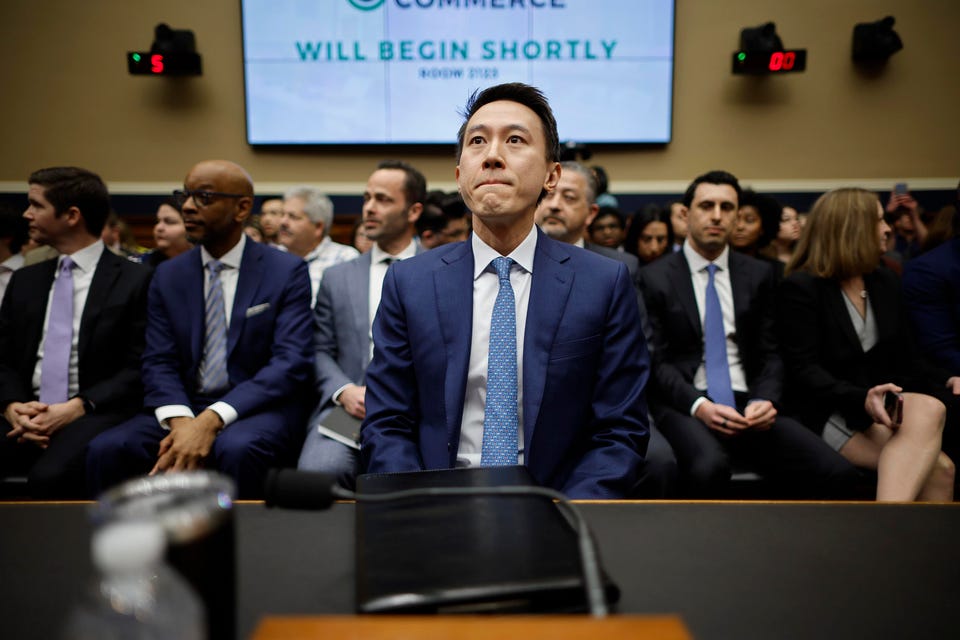Confronting The Real TikTok Threat


What do TikTok and Silicon Valley Bank have in common?
Before I answer that question, let me say this: After calling for a U.S. ban on TikTok for more than two and half years in this space, it looks like Congress is finally acting on my advice—and the advice of all those who have understood the national security threat posed by the Chinese-owned, Chinese-engineered social media platform, since President Trump first proposed a ban on TikTok in 2020.
For once the stars governing Congress, the media, and the American public seem aligned to do the right thing. Certainly TikTok CEO Shou Zi Chew’s dissembling performance in front of the Congressional hearing last week did nothing to dispel worries that TikTok deliberately and systematically fails to protect the petrabytes of data generated by TikTok users every day from the prying eyes of the Chinese government, which means the Chinese military and intelligence services.
TikTok’s effort to avoid an outright ban with its so-called “Project Texas,” i.e. storing the data collected from American users here in the U.S., couldn’t even win over the Biden White House. The administration have been inexplicably reluctant to take on the challenge of TikTok; it even lifted the Trump ban on TikTok, when it took office. But now there’s no escaping the fact that allowing a Chinese-owned social media platform run by apps designed by Chinese engineers, to continue to broadcast the news and information the Chinese government wants to an estimated 150 million users in the United States, would be a serious national security blunder.
That’s because the collection of data is just one aspect of the TikTok threat—perhaps not even the most important. More alarming is the algorithm TikTok uses to screen users’ preferences-an algorithm designed by parent company ByteDance. It’s able to use just a handful of visual clues based on a user’s watch time on a given video, to identify the piece of content that you’re vulnerable to, and give you more of it—and more and more.
It’s what makes TikTok addictive, and what leads some critics to compare it to fentanyl.

As I explained in a previous column:
Even if it’s not being used to broadcast pro-Beijing propaganda per se, it can manipulate preferences in ways that turn its users into unthinking Pavlov-like responders to the visual stimuli supplied by the algorithm, that could be dangerous for a nation that depends on an informed and engaged citizenry—even as TikTok gathers more and more data for China’s AI/ML mills.
The TikTok challenge doesn’t stop there, however. As reporters for our parent company Forbes found out, TikTok has a so-called “heating button” its staff can use to boost specific posts to its users and make any story appear viral, even when it’s not. when it’s TikTok and ByteDance’s staff which specific videos they want to go viral.
In fact, sources claim that the company uses the heating button for its own benefit, to boost brands and influencers it wants to partner with—including propaganda supporting the Chinese Communist Party.

All this falls into the category of brainwashing 100 million plus American users by a foreign power, something that Democrats have been reluctant to acknowledge because they use TikTok themselves for getting out their political messages.
That is, until now. This time, there seems to be a bipartisan consensus that we’ve reached the endgame with TikTok—at least as far a ban goes.
Yet the TikTok threat runs even deeper than that.
Like the failure of Silicon Valley Bank, it exposes some curious weaknesses in our vaunted high-tech sector.
TikTok and the algorithms that drive it, were developed by Chinese software engineers with little or no knowledge of America or American culture. Yet they managed to create a social media platform that has captured the imagination of 100 million plus American users, including (especially the most tech-savvy generation in U.S. history.
Tech blogger Eugene Wei (an avowed fan of TikTok) put the problem this way:
That an app launched out of China could come to the U.S. and sprint into cultural relevance in this attention marketplace should be a wake-up call to complacent U.S. tech companies. Given how many of those companies rely on intuiting user interests to sell them things or to show them ads, a company like TikTok which found a shortcut to assembling such an interest graph should raise all sorts of alarm bells.
I agree. American companies like Meta and Twitter, and even Google GOOG and Amazon AMZN , should be ashamed, to be outshone in this way. It’s not a good sign when a Chinese tech company has a better grasp of how to shape the minds of young Americans, than American companies do.
![]()
So while Congress looks to ban TikTok in the U.S., a move I can only applaud, it might also ask if Silicon Valley is failing to live up to its own hype—not just as America’s venture capital hub with the collapse of SVB VB , but as the prime mover of American tech innovation in the case of TikTok.
